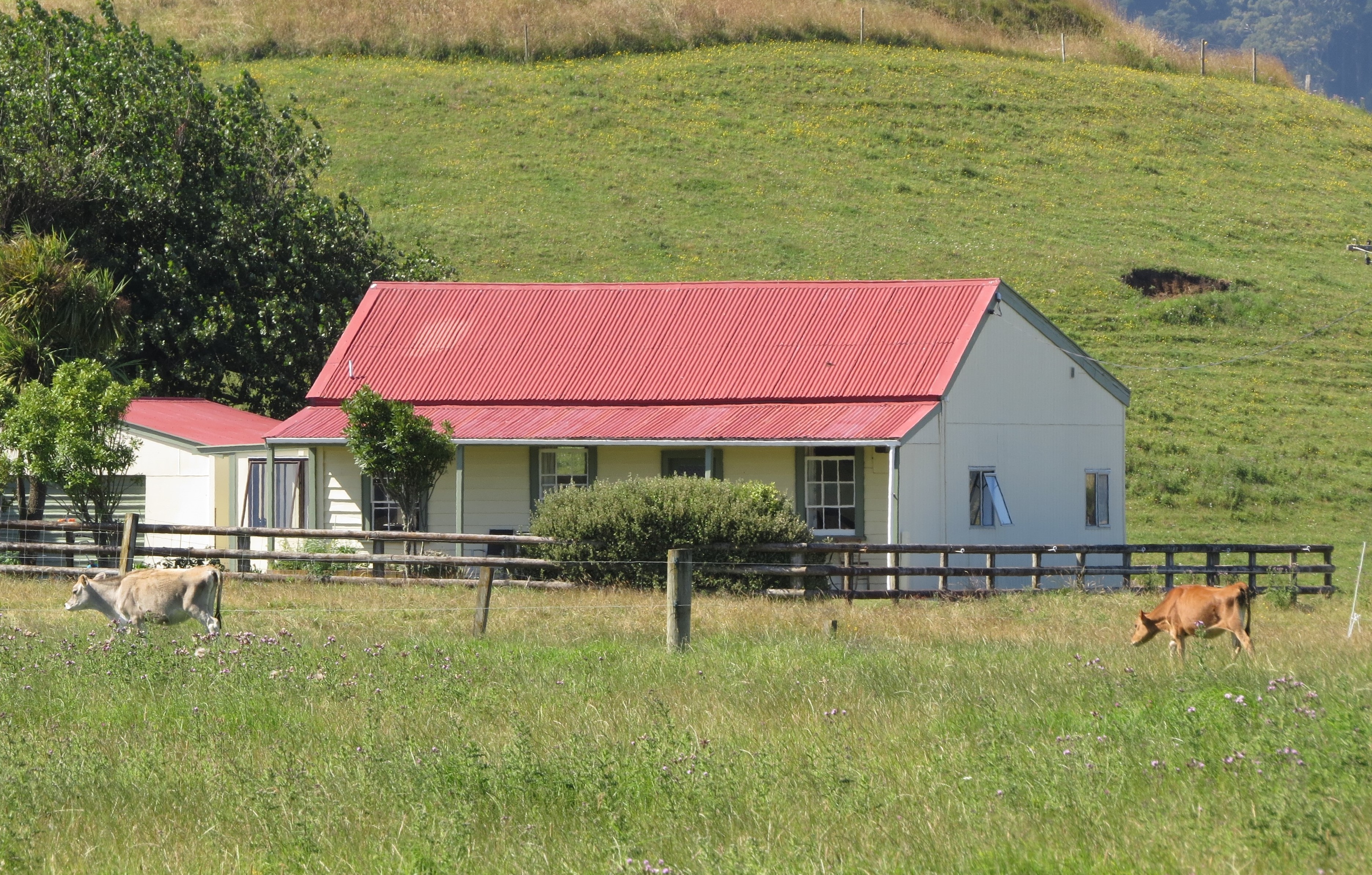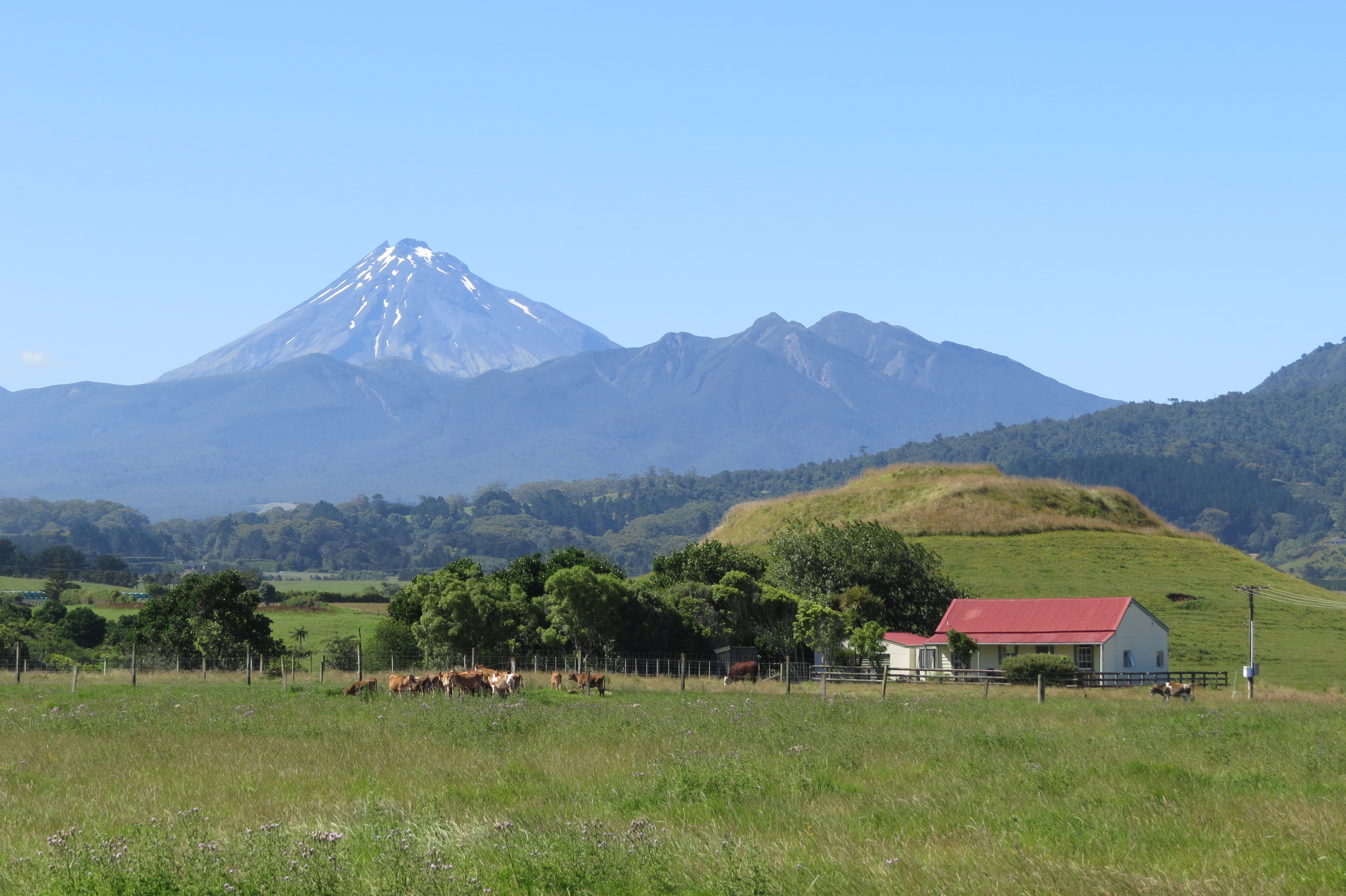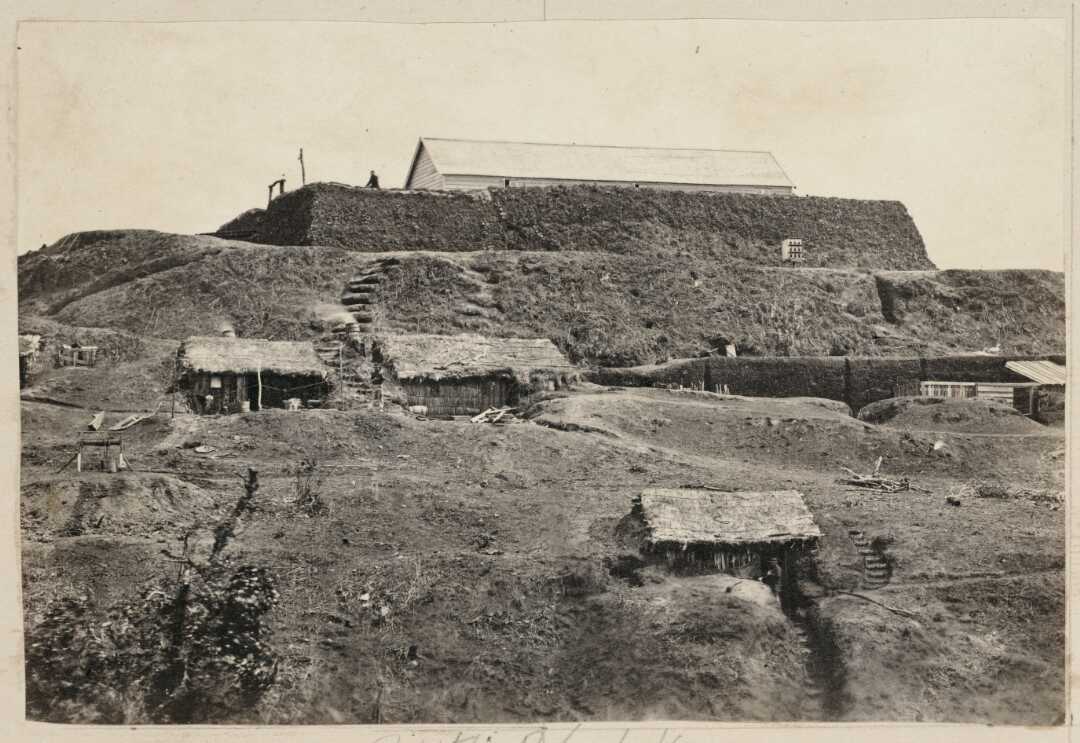





This building was constructed in 1864, and originally stood atop nearby Pahitere Redoubt as a blockhouse. Pahitere Redoubt was established by Military Settlers under the command of Captain Corbett in early March 1864, following the reoccupation of nearby St Andrews Redoubt. An old pā called Pahitere was reshaped to accommodate the blockhouse, and primitive soldiers huts were dug into the eastern slope; initially soldiers were accommodated in tents on the central platform prior to construction of the blockhouse.
The timber for Pahitere and other blockhouses was transported to New Plymouth from Auckland in early May 1864 aboard the government paddle steamer Prince Alfred. The first shipment was successfully landed on 5 May, with the steamer anchoring off Oakura, and the timber being taken ashore by surfboat. The Prince Alfred brought another shipment of timber on 23 May, although it could not be landed at Oakura, and was unloaded at New Plymouth instead. A letter to the Editor of the Taranaki Herald dated 16 June 1864 and signed ‘Pahitere’, stated that “within fourteen days the first blockhouse will be erected on our land, under Captain Corbett at Pahitere”.
Surveys of the Oakura Block commenced in early March 1865, being almost exactly a year after Pahitere was established; Pahitere and other redoubts providing protection for surveyors. The position declined in importance, and by July 1865 was occupied by just one man; the blockhouse and redoubt was taken over by local chief Ropata Ngarongomate in November 1866. In 1878, the settlers of nearby Koru Township and the surrounding district applied to the Taranaki Education Board to use the then unoccupied blockhouse as a school. However, as the land and blockhouse had been given to Ropata Ngarongomate it was unavailable for this purpose.
The next chapter in the history of the blockhouse begins with the emigration of Frederick and Emily (nee Wareham) Morris, to New Zealand in 1879. The couple and their four children first arrived at Port Chalmers aboard the Taranaki, and then carried on to New Plymouth aboard the Waitaki, arriving on 5 January 1880. They stayed at New Plymouth for a short time, before settling at Tapuae, between New Plymouth and Oakura, in 1880 or 1881. Frederick purchased Section 4 of Oakura District, upon which the former Pahitere blockhouse stood, and is thought to have had the building shifted to its present position a short time later to become the family’s first home.
In 1881, Frederick and his brother in law George Wareham, purchased a large tract of land on the north-side of the Koru Road intersection, which they successfully farmed together until mid-1888, when the partnership was dissolved, and Frederick purchased George’s share of the farm. The Wareham’s had a substantial villa constructed on the property in 1883 (present 976 South Road), and Frederick and his family shifted from the old blockhouse to this home sometime in the second half of 1888. Frederick was deeply involved in the local community, being appointed chairman of the Oakura Road District in 1881, a member of the Omata Licensing Committee, and a member of the Taranaki County Council.
Emily died in 1915, and Frederick remarried a widow named Alice Mary Kidd (nee Swanson), in 1916. By this time it seems the farm was largely managed by Frederick’s sons, with Frederick and Mary living at both Hawera and New Plymouth. Frederick died in 1935, and is buried with Emily at Oakura Cemetery. The property was sold about 1939 to a Mr Allie Wood, who retained ownership until 1952, when it was sold to Mr H. E. (Buck) Henchman.
Books/ Periodicals:
Māori Fortifications of the Ōmata and Oākura Districts, Prickett, Nigel, Taranaki, (1980)
Morris Family Tree: Tapuae 1880-1993, Corbett, N. Aries Print, New Plymouth (1993)
Records of the Auckland Institute and Museum, Vol. 17, pp 1-48;
Please do not reproduce these images without permission from Puke Ariki.
Contact us for more information or you can order images online here.